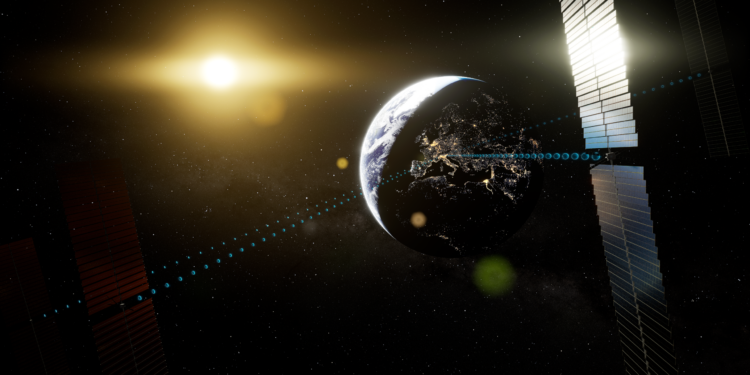Belgium (Brussels, Morning Newspaper) What if humans could use solar energy directly beamed from space? The European Space Agency (ESA) has signed contracts for two parallel concept studies on commercial-scale space-based solar power plants, in a bid to mature the feasibility of harnessing solar energy from space and use it on Earth for clean energy needs.
Solaris
The initiative, called Solaris, is based on the idea of gathering solar energy where it is available continuously and in plentiful supply: up in Earth’s orbit. Here, it is unperturbed by local weather or darkness, and can be sent down wirelessly to Earth where it is needed, ESA explained.
“These contracts are for the first European concept studies of Space-Based Solar Power for more than 20 years, so today marks an important step,” said Sanjay Vijendran, ESA’s lead for Solaris, on April 17.
“We are really starting from a blank sheet of paper to get an up-to-date design for what working solar power satellites could look like, sourcing promising ideas from everywhere we can, and leveraging the latest advancements in space and terrestrial technologies.”
Complementing Earth solutions
ESA’s concept complements, rather than competes, with terrestrial renewables since space-based solar energy can make power available reliably on an ongoing 24/7 basis, providing much-needed stability to the electricity grid as the share of intermittent renewables continues to increase, thus reducing dependence on large-scale storage solutions.
The Solaris initiative counts on the support of energy players such as French electricity utility ENGIE and Italian ENEL as members of the study consortiums.
Their role is to reflect the potential value the energy sector is already seeing in this capability for the future.
“It’s important that we engage the energy sector right from the start of this development and listen to their needs, so we know from the beginning that we are building something that end users will want and use,” said Vijendran.
Global interest
SOLARIS began as a result of growing global interest in gathering energy from space.
In the US, Caltech university launched a satellite into orbit in January to test key technologies including space-to-space microwave transmission of solar energy.
Japan plans to fly a test mission in 2025, while China has its own project planned for 2028, with a ground-based wireless power transmission test facility already in place.
Meanwhile, the UK government has been in discussion with Saudi Arabia to supply its Neom smart city region with carbon-free electricity from space.
According to Vijendran, there are a lot of fundamental reasons why space-based solar power is more feasible and desirable than ever before: “These include the reduced cost of launch to orbit with the advent of reusable launchers, the reduced cost of satellite hardware through mass production and trends towards very modular solar power satellite designs.”
Team work
According to ESA, the Solaris programme should be completed before the end of 2023, and both contracts are being led by Arthur D Little and Thales Alenia Space Italy.
The project was approved by ESA’s Council last November and funding for technological R&D projects will come from ESA’s long-running General Support Technology Programme.
If the results from Solaris are promising, it will help Europe to make an informed decision by the end of 2025 on how to proceed with a full development programme for commercial-scale space-based solar power.




